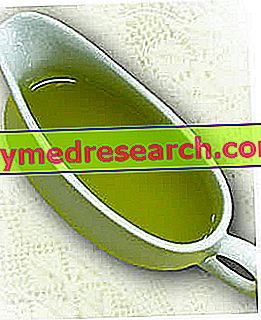Pinzimonio in history
Already in ancient times, the pinzimonio was a very widespread alimentary practice: a triumph of colors guaranteed by the most disparate vegetables, which adorned to perfection large serving trays. Probably, in the past, the role of the pinzimonio was purely decorative, therefore very different from the actual use: in our days, the pinzimonio serves as an excellent appetizer, light and at the same time appetizing.
What is pinzimonio?

The triumph of which we spoke remains however but, unlike the past, the pinzimonio does not assume only a decorative function.
How to prepare
The preparation of the pinzimonio is rather simple. First of all, the sauce is prepared with extra virgin olive oil, salt, pepper and lemon or vinegar: everything is vigorously mixed to form an emulsion. After the preparation of the sauce, proceed with that of the vegetables, which can change depending on the season: in fact, seasonal vegetables are preferable, so that the pinzimonio is fresh, and the vegetables are crisp and tender and sweet at the same time.
The vegetables are cut into strips or cubes, and placed in a single serving dish or in smaller bowls, one for each diner.
Three main vegetables cannot miss the carrots, celery, fennel, peppers and tomatoes; some even risk the raw courgettes, which blend well with the alternative pinzimonio, prepared with mayonnaise. Also the onions, the artichoke hearts, the radicchio and the cucumbers can be part of the pinzimonio, clearly respecting the seasonality.
Follow our Video Recipe on vegetable pinzimonio
Pinzimonio - light, detoxifying and purifying starter
X Problems with video playback? Reload from YouTube Go to Video Page Go to Video Recipes Section Watch the video on youtubeSauce and properties
The pinzimonio, in addition to satiate without weighing it down, also hides multiple properties:
- The pinzimonio sauce is made from extra virgin olive oil (acidity not higher than 0.8%): as we know, it is a source of monounsaturated fats, including oleic acid. Precisely for this reason it is very useful to keep cholesterol levels in the blood under control. Not surprisingly, extra virgin olive oil is recommended for those suffering from hypercholesterolemia. Also to be considered its hepatoprotective, anti-inflammatory, laxative and anti-gastric ulcer properties.
- One of the key ingredients of pinzimonio is celery ( Apium graveolens ), an excellent diuretic, refreshing, aperitif and digestive. Not to forget its powerful remineralising, antihypertensive and hypocolestrolemic action.
- Also carrots (Daucus carota ), in the pinzimonio, play a very important role: they are above all a mine of mineral salts and vitamins, besides abounding in sugary reserves. The carrot is also remembered as a diuretic, digestive and carminative.
- The fennel ( Foeniculum vulgare ), in the pinzimonio, strengthens the digestive, diuretic, carminative and remineralizing actions anticipated by celery and carrot. Furthermore, fennel is useful in the case of gout, lack of appetite, fatigue, flatulence, as well as being an ally in the regularization of the female menstrual cycle, due to its richness in flavonoids and phytoestrogens. The function of liver detoxification associated with fennel is very useful.
- The pepper ( Trialeurodes vaporariorum ), in addition to decorating the yellow, red or green pinzimonio, is a mine of vitamin C, a powerful antioxidant. In addition to this, the pepper acts as a digestive and stimulates gastric digestion. Unfortunately there are plenty of contraindications related to the pepper: due to the large amount of capsicin, the pepper can be indigestible, and it is not recommended for those suffering from gastric ulcer or heartburn because, by stimulating digestion, it tends to acidify the gastric pH.
- Even the tomato ( Solanum lycopersicum ), with its beautiful red color, cheers up the pinzimonio compositions: more precisely, due to its shape and its "practicality of use" - if one can say so - the tomato takes the place of classic tomato in the creation of pinzimonio trays. Clearly antioxidant due to its richness in lycopene, the tomato is also an excellent food stimulating salivary and gastric digestion, diuretic and hypocholestrolemic. Unfortunately, the tomato is a potentially allergenic food: in this regard, sensitive or allergic people must resist the small tomatoes, which brightly brighten the pinzimonio.
Summary
Pinzimonio: to fix the concepts
| Pinzimonio: between past and present | Past: pinzimonio → purely decorative function Present: pinzimonio → excellent appetizer, light but tasty |
| Pinzimonio: sauces | Classic: extra virgin olive oil, salt, pepper and possibly lemon or vinegar Tasty: add mayonnaise Tasty: add yogurt and parsley sauce |
| Pinzimonio: vegetables | Strictly fresh and in season:
|
| Sauce and properties |
|



